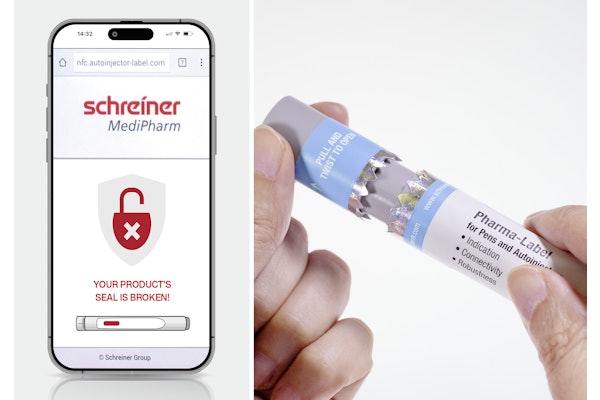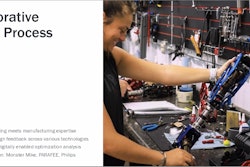In pharmaceuticals and for consumer-packaged goods companies in general, packaging may be the last place in the corporation that has not been Six-Sigma’d to death. Companies have been looking for ways to squeeze time and cost out of the manufacturing process and I think they’ve finally arrived at packaging’s door.
There’s more intense pressure to get packaged products to market faster, to increase quality, and reduce the amount of re-work. There’s increasing pressure to reduce internal costs. Re-work is extremely costly! No one can say in a get in meeting, “Jim, are you the guy that caused that 400,000 dollars worth of re-work? Please raise your hand if you are responsible.” No one is willing to quantify it because the minute you do, it means it really happened.
Packaging department feels the heat of change
Whether it’s for counterfeiting reasons, branding, FDA compliance, to accommodate an ingredients change, or for marketing purposes, package changes have an impact on the packaging department. These people feel pressured by their company to make more changes, make them more quickly, with the same amount of staff or less, and to use less money. And the packaging folks are always at the end of this process, so if the changes are late, it must be their fault. The poor packaging folks always get hit with “well, it was supposed to be on the shelf last week but its still down in packaging.”
A lot of packaging department people are now asking, “If that’s the way life is, is there something we can do to mitigate that issue?” That is where the Six Sigma process comes into play. And here is how it kind of works--first of all, everyone has a process because product is getting to the shelf. With Six Sigma, you simply look at the current process to determine whether or not there are places where time can be removed. Six Sigma may sound ugly or expensive, but it’s actually a good thing for packaging because it forces the analysis of your current practices that exist today in that process. By using automation, we let technology do what it does best. At the end of the day, Six Sigma does what you tell it to do. It doesn’t make decisions for you, it simply says, “every single time this happens, they want this to happen,” and it does it. Once the process is built and automated, you let the technology do the mundane, mindless things that it’s really best at and you take the people who are in the packaging department and let them do things like packaging as opposed to routing and asset management, and filing.
Six Sigma economic justification
The regulatory and compliance function can help with that because they are going to mandate it in many places. Process experts are not experts on the business, but on the process and they move them from place to place. You have to sit down with them and explain the process as it is today. Once that’s done, you have a clear baseline of how the process works, what it costs, and who is involved. That gives you the ability to look at a return-on-investment number.
With this baseline, you will know for sure where money is leaking out, where time is leaking out, and what problems exist. You learn and argue about your own process and how it works. What happens is sooner or later this process gets cleaned up and gets put on the wall. Some steps will be removed simply by that action occurring where everybody has to sit down and talk about it. The next thing to do is to try to figure out some best practices to put into effect in this process to make it go faster, smoother, and be more visible.
There are two things that happen--first of all, some parts of the process simply disappear because they are unnecessary. They may have been made unnecessary by the speed of new technology. Or, they have been made irrelevant because the customers and usually the Six Sigma guys find a better way to do it.
Streamlining product approvals
Think about all the steps that need to happen to get a package on the shelf. Let’s look at one--the approval of the label. It could be graphics, it could be text, but whoever is responsible for the label design has to go around for approvals so that it can be put on a package. Is marketing going to see it, branding, regulatory, compliance, labeling, legal, engineering? Are people going to send stuff around via e-mail or in CDs and packages?
All of this kind is crazy because people travel. So anything that does not allow a person to open their laptop in a hotel room in Beijing, and have that label appear on their screen so they can approve it--just think of what that does to the process. We have had customers who tell us that they pay Federal Express incredible amounts of money every year to try to make a Federal Express package hit a hotel on the same day that the traveler is going to be at a location. And if you miss the drop-off, it’s too late for the next day. By the time you realize, you’ve missed, you add a whole another day. Technology makes that unnecessary.
What you need is to build a best practices template for the routing, comments, and approvals. Develop a series of templates that says, for example, “this is a Class II drug, for a package insert.” With that information, the system itself ought to be able to know exactly what route it will require.
You can tell later then, with our software program, where the task might be after x days. You don’t need to e-mail or pick up a phone. And everyone can access it from their own computer, wherever they are in the world. It’s an all internet-based system.
Overall perspectives
You need to get the Six Sigma best practices down and then quantify those best practices by using technology that captures all those best practices for you. And can begin to take some actions on its own because most of these things are not terribly difficult to understand, once they’ve all been written down and quantified.
I think the thing that most of the customers are worried about is that the competitive pressures dollars, particularly in pharmaceuticals, are so significant that issues relative to the time to market and quality and re-work have become magnified.
Expiring patents
If you have a blockbuster drug, you already know the exact date that the competitor is going to arrive at the shelf under a new generic brand. If you don’t prepare for the day the drug comes off of patent, then you’ve lost an unbelievable opportunity. If I don’t cannibalize my own drug coming off of patent, someone else is going to. It’s happening more frequently because a number of drugs are coming off of patent. I think there is also a shortening of the patented life of somebody’s product now. And the other thing that is happening I think is that the FDA is approving more drugs for the same disease, which didn’t used to happen.
Packaging provides competitive differentiation
A drug is now not only going to compete with products with the same ingredient, but it’s now sitting next to the Ibuprofen, next to the Acetaminophen, next to the aspirin, next to the buffered aspirin. And so, you have a completely new competitive thing to worry about: Is my customer actually going to pick the right one? The only way to tell is via that package. We know that 70-percent of the purchase decisions for these over-the-counter products are made at the shelf. The package has become the brand and the advertising vehicle for many of these products.
The significance of branding
Whether you are in the structural or the graphic side of packaging, there are many factors causing packages to change. They may include counterfeiting, branding, or other issues. Regarding branding of over-the-counter packages, go to the pain medication aisle and just move back as far as you can away and focus on all the brands. Packaging for both store brands and national brands looks similar, and the products have similar, if not the same ingredients. Yet if you go into another aisle, you will see the store brand packaging look completely different from national brand. There are several factors involved here in differentiating products sold under a private label versus a national brand.
Kent St. Vrain is vice president, marketing and business development, Paxonix (www.paxonix.com), a div. of MeadWestvaco, and maker of PaxPro (shown in the accompanying photo). Paxonix teams with life-science customers to optimize their packaging, labeling, and marketing processes.
There’s more intense pressure to get packaged products to market faster, to increase quality, and reduce the amount of re-work. There’s increasing pressure to reduce internal costs. Re-work is extremely costly! No one can say in a get in meeting, “Jim, are you the guy that caused that 400,000 dollars worth of re-work? Please raise your hand if you are responsible.” No one is willing to quantify it because the minute you do, it means it really happened.
Packaging department feels the heat of change
Whether it’s for counterfeiting reasons, branding, FDA compliance, to accommodate an ingredients change, or for marketing purposes, package changes have an impact on the packaging department. These people feel pressured by their company to make more changes, make them more quickly, with the same amount of staff or less, and to use less money. And the packaging folks are always at the end of this process, so if the changes are late, it must be their fault. The poor packaging folks always get hit with “well, it was supposed to be on the shelf last week but its still down in packaging.”
A lot of packaging department people are now asking, “If that’s the way life is, is there something we can do to mitigate that issue?” That is where the Six Sigma process comes into play. And here is how it kind of works--first of all, everyone has a process because product is getting to the shelf. With Six Sigma, you simply look at the current process to determine whether or not there are places where time can be removed. Six Sigma may sound ugly or expensive, but it’s actually a good thing for packaging because it forces the analysis of your current practices that exist today in that process. By using automation, we let technology do what it does best. At the end of the day, Six Sigma does what you tell it to do. It doesn’t make decisions for you, it simply says, “every single time this happens, they want this to happen,” and it does it. Once the process is built and automated, you let the technology do the mundane, mindless things that it’s really best at and you take the people who are in the packaging department and let them do things like packaging as opposed to routing and asset management, and filing.
Six Sigma economic justification
The regulatory and compliance function can help with that because they are going to mandate it in many places. Process experts are not experts on the business, but on the process and they move them from place to place. You have to sit down with them and explain the process as it is today. Once that’s done, you have a clear baseline of how the process works, what it costs, and who is involved. That gives you the ability to look at a return-on-investment number.
With this baseline, you will know for sure where money is leaking out, where time is leaking out, and what problems exist. You learn and argue about your own process and how it works. What happens is sooner or later this process gets cleaned up and gets put on the wall. Some steps will be removed simply by that action occurring where everybody has to sit down and talk about it. The next thing to do is to try to figure out some best practices to put into effect in this process to make it go faster, smoother, and be more visible.
There are two things that happen--first of all, some parts of the process simply disappear because they are unnecessary. They may have been made unnecessary by the speed of new technology. Or, they have been made irrelevant because the customers and usually the Six Sigma guys find a better way to do it.
Streamlining product approvals
Think about all the steps that need to happen to get a package on the shelf. Let’s look at one--the approval of the label. It could be graphics, it could be text, but whoever is responsible for the label design has to go around for approvals so that it can be put on a package. Is marketing going to see it, branding, regulatory, compliance, labeling, legal, engineering? Are people going to send stuff around via e-mail or in CDs and packages?
All of this kind is crazy because people travel. So anything that does not allow a person to open their laptop in a hotel room in Beijing, and have that label appear on their screen so they can approve it--just think of what that does to the process. We have had customers who tell us that they pay Federal Express incredible amounts of money every year to try to make a Federal Express package hit a hotel on the same day that the traveler is going to be at a location. And if you miss the drop-off, it’s too late for the next day. By the time you realize, you’ve missed, you add a whole another day. Technology makes that unnecessary.
What you need is to build a best practices template for the routing, comments, and approvals. Develop a series of templates that says, for example, “this is a Class II drug, for a package insert.” With that information, the system itself ought to be able to know exactly what route it will require.
You can tell later then, with our software program, where the task might be after x days. You don’t need to e-mail or pick up a phone. And everyone can access it from their own computer, wherever they are in the world. It’s an all internet-based system.
Overall perspectives
You need to get the Six Sigma best practices down and then quantify those best practices by using technology that captures all those best practices for you. And can begin to take some actions on its own because most of these things are not terribly difficult to understand, once they’ve all been written down and quantified.
I think the thing that most of the customers are worried about is that the competitive pressures dollars, particularly in pharmaceuticals, are so significant that issues relative to the time to market and quality and re-work have become magnified.
Expiring patents
If you have a blockbuster drug, you already know the exact date that the competitor is going to arrive at the shelf under a new generic brand. If you don’t prepare for the day the drug comes off of patent, then you’ve lost an unbelievable opportunity. If I don’t cannibalize my own drug coming off of patent, someone else is going to. It’s happening more frequently because a number of drugs are coming off of patent. I think there is also a shortening of the patented life of somebody’s product now. And the other thing that is happening I think is that the FDA is approving more drugs for the same disease, which didn’t used to happen.
Packaging provides competitive differentiation
A drug is now not only going to compete with products with the same ingredient, but it’s now sitting next to the Ibuprofen, next to the Acetaminophen, next to the aspirin, next to the buffered aspirin. And so, you have a completely new competitive thing to worry about: Is my customer actually going to pick the right one? The only way to tell is via that package. We know that 70-percent of the purchase decisions for these over-the-counter products are made at the shelf. The package has become the brand and the advertising vehicle for many of these products.
The significance of branding
Whether you are in the structural or the graphic side of packaging, there are many factors causing packages to change. They may include counterfeiting, branding, or other issues. Regarding branding of over-the-counter packages, go to the pain medication aisle and just move back as far as you can away and focus on all the brands. Packaging for both store brands and national brands looks similar, and the products have similar, if not the same ingredients. Yet if you go into another aisle, you will see the store brand packaging look completely different from national brand. There are several factors involved here in differentiating products sold under a private label versus a national brand.
Kent St. Vrain is vice president, marketing and business development, Paxonix (www.paxonix.com), a div. of MeadWestvaco, and maker of PaxPro (shown in the accompanying photo). Paxonix teams with life-science customers to optimize their packaging, labeling, and marketing processes.
Companies in this article



















